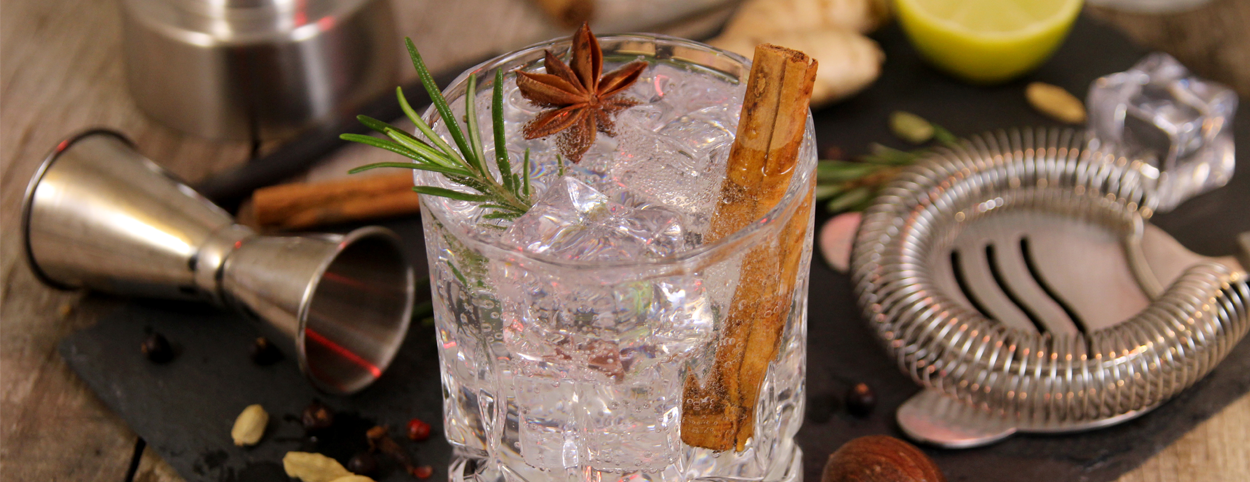
How we created Durham Gin
Durham Gin was our first ever product, and is still our biggest seller. We started off with 2 lists of botanicals; the first were flavours that reminded us of Durham and a summer walk along the river banks; Juniper, Angelica, Celery Herb, Elderflower. The second list were the opposites; flavours from around the world that reminded us of our travels, and which balanced the local flavours. We spend months working in the labs at Herriot Watt developing each flavour and combining them to create the perfect balance of floral and spicy, citrus and savoury. When we first tasted the finished product with it’s long dry finish we knew we had something special.
-
Durham Gin Production Method
Durham Gin begins its life by hand-crushing Juniper berries, an essential component of any gin. These are added among other robust botanicals, including Angelica and Pink Peppercorn, and placed in a mixture of locally sourced Durham spring water and pure grain spirit. Left to infuse overnight in ‘Lily’ our 400-litre copper pot still; this process is called maceration.
The next morning the second batch of botanicals is added and as the still is heated, using traditional steam power. As the still heats up he alcohol vapour rises through a copper tube called a Lyne Arm. Mounted on the Lyne Arm is the Gin Basket which contains the 3rd and final set of lighter, more delicate botanicals, Elderflower, Celery Seed, Cardamom, and citrus peels.
As still is heated we manipulate the chemical properties of this water/ethanol mixture, the boiling point of alcohol (78.37
degrees C) is lower than that of water (100 degrees C), and as such, the distilled liquid contains a higher percentage of alcohol. As evaporation begins and the top of the still is cooler than the bottom a temperature gradient is established. The vapour condenses when it reaches the top of still and falls back down, this process of evaporation and condensation is called Reflux and helps to produce a smooth spirit. -
Visit our Durham shop
Eventually, the vapour rises into a copper tube, the Lyne Arm, where more flavour extraction occurs, this is through vapour infusion of light botanicals stored in a Gin Basket located halfway along the Lyne Arm. All the possible flavour has been extracted when the vapour reaches the worm tub – a traditional spiraled cooling system. It contains a copper coil which is a good conductor of heat and increases the surface area for heat transfer, immersed in cold water Lily utilises this old-fashioned ‘worm tub’ to condense the hot gin vapour down to a cool gin liquid, this is collected at 80% abv. Finally the liquid gin cascades off the Parrot Spout, a specially shaped spout for collection.
Not all of the liquid is ‘good enough’ i.e. has the correct flavour profile for our gin and such ‘cuts’ are taken throughout the run known as the ‘heads’, ‘hearts’, and ‘tails’. The first liquid the ‘heads’ (a secret number of litres) doesn’t have the correct flavour profile and such doesn’t make it into Durham Gin. In the second section, the ‘hearts’ contains the precious gin and in the third section, the ‘tails’ are kept aside as again the flavours aren’t quite right for Durham Gin. These later get recycled into our Vodka, and nothing goes to waste.
This combination of complex techniques creates a Gin of real character and distinction, a genuine craft spirit.
As Durham Gin is a London Dry Gin, only water is added at this stage to take it from 80% abv down to the more palatable bottling strength of 40% abv.

